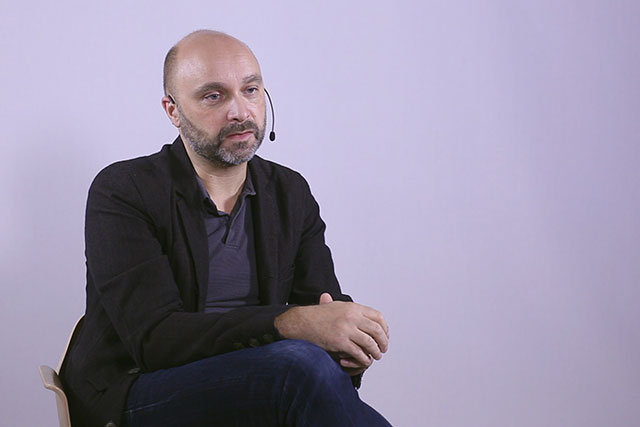Theory of Mind
Developmental psychologist Uta Frith on autism, social interaction, and the difference between mentalizing and empathy
videos | December 30, 2016
The video is a part of the project British Scientists produced in collaboration between Serious Science and the British Council.
Theory of mind is a pervasive human ability that we didn’t even suspect existed until we studied autism. That’s why it’s very important when you talk about theory of mind also to talk about autism. Theory of mind is a nickname, it’s really intended to refer to the ability that we all have, we, human beings, to understand other human beings, not in terms of how they behave and what they do, but in terms of what they feel and think. So, totally invisible things in your head, but we have a theory of what happens in your mind. It’s not a theory like philosophers have, not any explicit theory. It’s an intuition.

And, of course, one of the things that mentalizing enables people to do is to lie. It gives you the ability to tell whether you know something and whether I can insert a false belief into your mind, and I then have to track this. So, it’s hugely important tool in our social interaction, not always for the good. One of the things that have been said about autistic people is that they don’t lie. And they don’t, in fact, understand why ordinary people lie all the time. We even lie when we don’t need to. For example, just to be nice for somebody, to be very flattering. all our politeness rules have to do with kind of unconscious mentalizing program which says: “We don’t want to offend him. It is clear, that we are taking feedback all the time and we will see whether we have gone wrong in what we are doing and thinking about them.
So, given that this is such fanciful idea, which many people would say, Wow, this is ridiculous, how can you postulate that this is an ability, like the ability to hear or to see colors. I think that it is just like that, it’s just like an ability to see colors – an ability to see invisible mental states of others, and therefore it has a basis in a brain. And we could show this using neuroimaging methods. We could make people do tasks which demand that you think of mental states and contrast them with tasks that are exactly the same in every possible way, but you don’t have to invoke mental states. These are, for example, movements of objects, like cause and effect. When we are thinking about intentions and beliefs, they all can be expressed in movements, but you would interpret the movement completely differently, intentionally and deliberately, not just as a physical cause and effect. We can compare when people watch little films, when they read stories, all sorts of different methods have been used to see what happens in that brain in these two situations; subtract activity in the brain between those two conditions, and what we can see is a particular network of regions. That is robust network: it’s front regions, temporal regions, and they are very well-connected in the normal case and not so well connected in the case of autism. So, there is a biological basis for theory of mind.
So, thinking about mentalizing and theory of mind has really changed the way we look at the development of human mind and the evolution of the human mind. So, one question that you need to ask immediately is where does it come from in evolution? Is it really human-specific? And this is where the future work will be. And already there are studies that show that other animals have some beginnings of the very same ability. The interesting study has been carried out with birds, with very clever birds, the Corvid family, who hide food and if they know they are observed by another bird, they will later on take away that hidden food and put it somewhere else. This is theory of mind. Now, it is very reasonable to suppose that maybe this also happens in other species, and it would be really interesting to see that. But this is kind of theory of mind that is totally without language. We believe that human beings have, possibly, two forms of theory of mind: the very automatic one and another one, which has a lot to do with language, and which can be used in order to reflect on our own mind. So, that is another way that the future study will have to go. We have to see why is it so special for human beings that they can consciously reflect on what they think and intend and feel.So there are a lot to be done still in research on theory of mind. We need to know whether there is an implicit automatic form, whether we share that with other animals and whether there is an explicit conscious form of theory of mind, perhaps, even other forms that have not even been discovered yet. We need to know whether in ordinary child development the explicit theory of mind builds on the other automatic implicit theory of mind or whether it is completely independent. At this moment, these are all open questions. Sometimes people mistake theory of mind and mentalizing for empathy. It sounds like they are sort of related. And yet we have found through the study of autism, through the methods of brain imaging that these are quite separate things. So, even though mentalizing means taking feelings into account or tracking changes in feelings, empathy is quite a different sort of ability which rests on a different brain system, a brain system that has to do with something like contagion. So what you feel, I feel too, if you laugh, I will laugh, slightly. I might not show it, but we have shown through using very small devices on the face that the muscles that are to do with laughing will be activated, will be ready to laugh when another person laughs. So, this is a kind of automatic mechanism that, we can say, is a primary form of empathy, so that we do indeed feel the other’s pain, and also feel other’s joy. But that is quite separate. And the fascinating thing is that in autism this is actually very often intact and present. So, it’s not the case that in autism all social abilities are missing. It’s just this menthalizing that is missing.






























